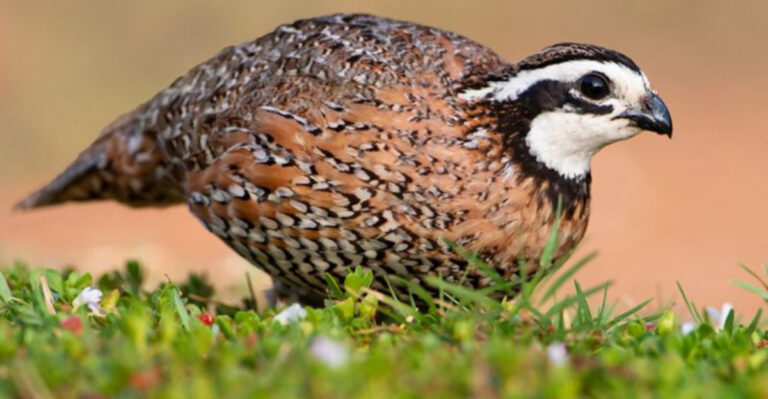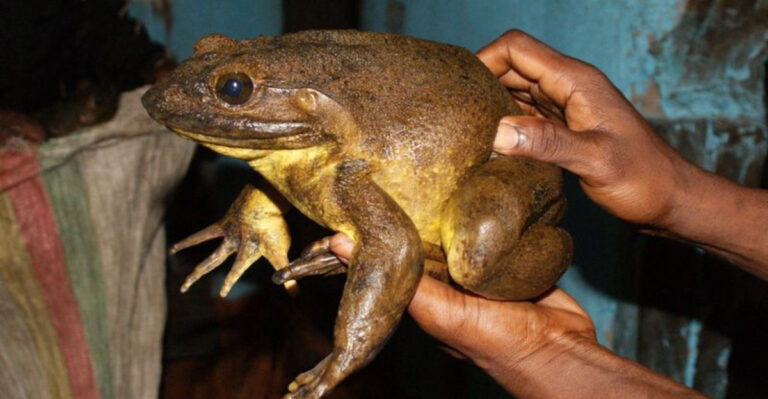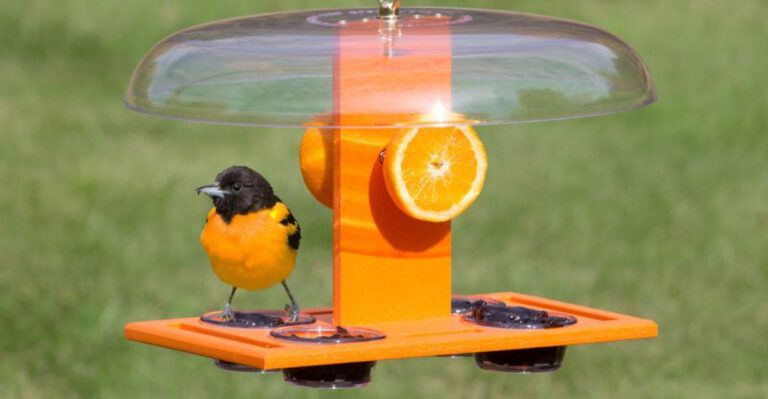Hummingbird Nests Are Hard To Spot, But Here’s 8 Things To Look Out For
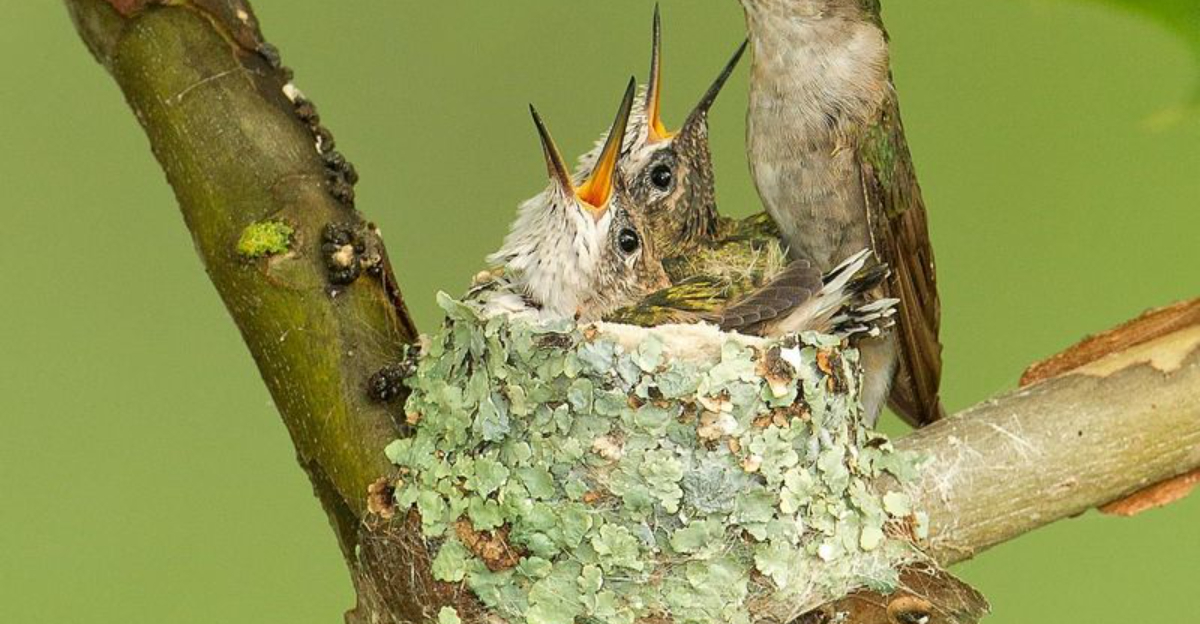
Hummingbird nests are one of nature’s delightful secrets, often tucked away in places you’d least expect. These petite wonders are masterpieces of avian architecture, intricately woven with spider silk and plant fibers.
Spotting one can feel like finding a hidden treasure in the wild. If you’ve ever been curious or eager to find one, understanding what to look for is key.
Today, we’ll explore a few distinct signs and characteristics that will help you locate these elusive nests. Let’s embark on this fascinating journey to uncover the marvels of hummingbird homes.
1. Size And Shape
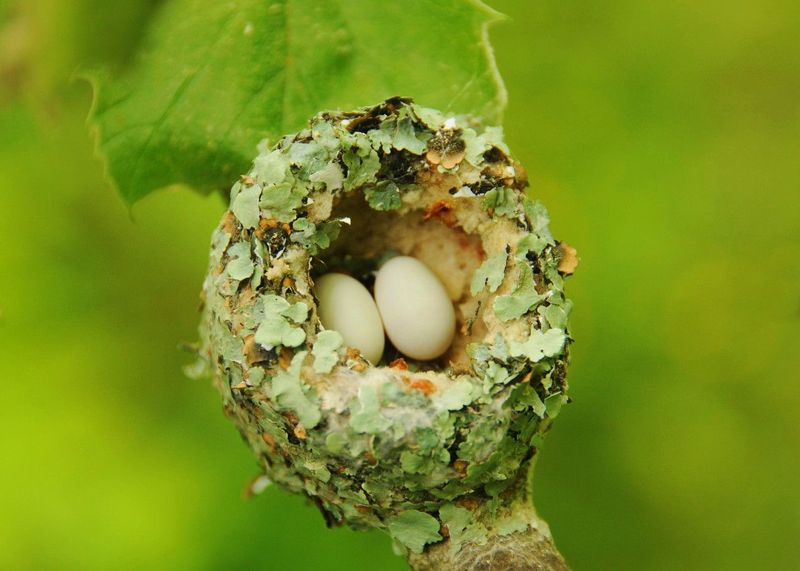
Hummingbird nests are marvels of miniaturization, typically the size of a walnut or a golf ball, yet packed with incredible detail.
These nests are often cup-shaped, crafted meticulously using spider silk, plant fibers, and downy feathers. This blend of materials not only provides strength but also flexibility, allowing the nest to expand as the chicks grow.
Imagine finding such a small structure, perfectly balanced on a slender branch in your garden or a nearby park. It’s almost as if the branch holds a tiny secret, woven with care and patience by a diligent mother hummingbird.
The nest is adeptly camouflaged within the foliage, making its discovery both a challenge and a reward.
If you spot what seems to be a peculiar bump on a tree limb, take a closer look.
This could be the handiwork of these incredible little architects. Remember, patience and a keen eye are essential allies in this natural treasure hunt. Spotting the delicate cup is often the first step in understanding the rich, vibrant life that surrounds these tiny aviators.
2. Location Preferences
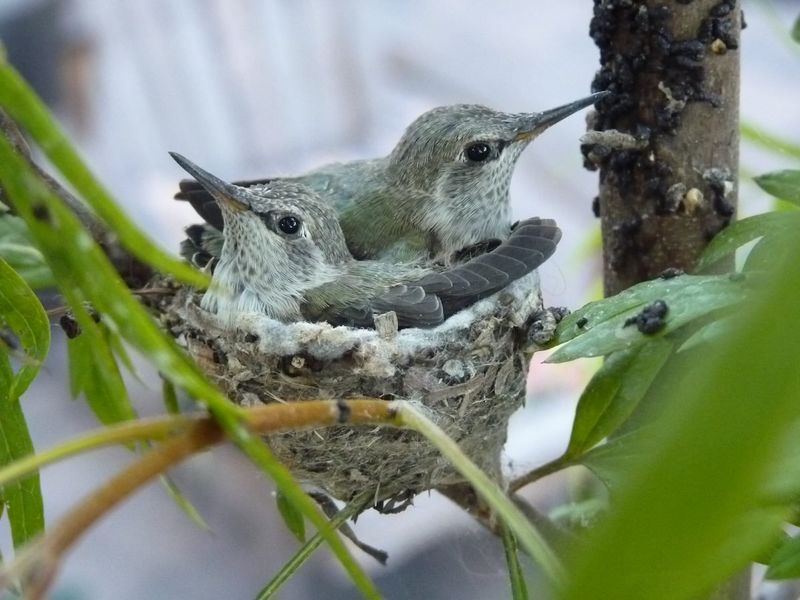
Hummingbirds are choosy about where they build their nests, often opting for locations that provide both safety and accessibility. Typically, you might find these nests in the fork of a tree branch, where leaves offer a natural canopy against predators and the elements.
These birds prefer spots that are neither too exposed nor too hidden. The ideal location is often within a dense leafy area that provides ample cover, yet not so dense that it obstructs the bird’s swift flight. Spotting a nest in a suburban backyard, nestled gracefully amidst the greenery, is a testament to their adaptability.
Interestingly, hummingbirds have been known to return to favored spots year after year, sometimes even to the same tree or bush. Observing such a site might reveal the tiny, almost invisible homes that fluttering visitors have cleverly designed.
When exploring potential nest sites, consider the habitat’s suitability in terms of food availability and protection from the wind. This thoughtful selection process is an essential part of their nesting strategy, ensuring the safety and growth of the next generation.
3. Nest Materials
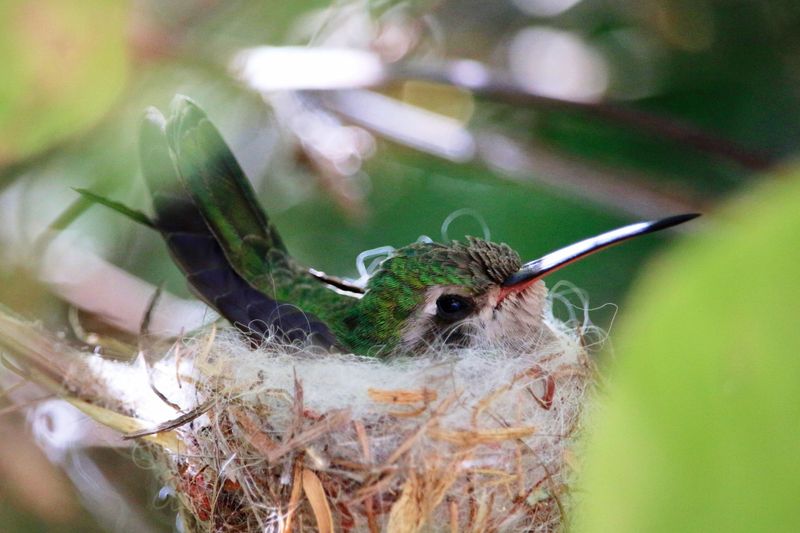
The construction of a hummingbird nest is an exercise in artistry and engineering. These tiny architects use a variety of materials to create their nests, with spider silk being a crucial component. This silk acts like a natural adhesive, binding the structure together while allowing it to stretch as the chicks grow.
Alongside silk, the birds incorporate fine plant fibers and downy materials such as dandelion or thistle down. T
hese elements give the nest its soft, insulated interior, crucial for keeping the eggs warm and secure. The outer layer often includes bits of bark or lichen, which serve as camouflage, blending the nest seamlessly into its environment.
Observing a nest up close, one can appreciate the meticulous attention to detail that goes into its creation. Each piece is carefully selected and placed, resulting in a resilient yet flexible home.
When seeking out hummingbird nests, look for small, seemingly random collections of natural debris on tree branches. These could very well be the cleverly disguised homes of these resourceful birds, showcasing their ingenuity and the wonders of nature.
4. Camouflage Techniques
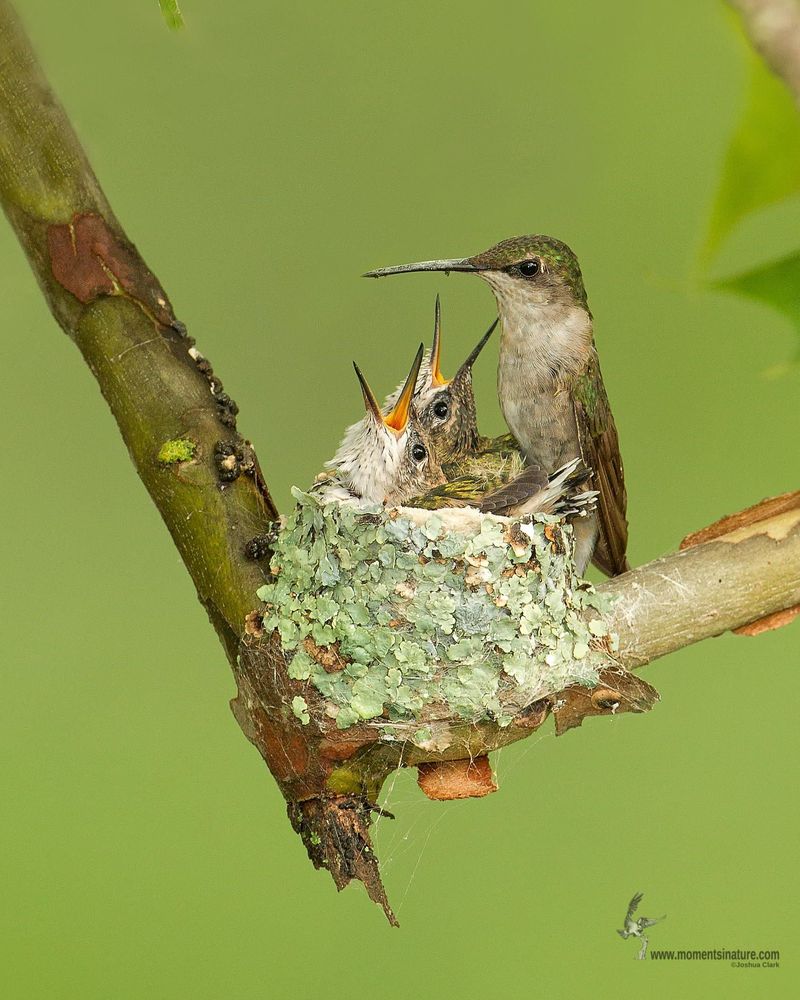
One of the most fascinating aspects of hummingbird nests is their remarkable camouflage. These nests are often adorned with pieces of moss, lichen, and even paint chips, allowing them to blend flawlessly into their surroundings. This natural disguise is a defensive tactic against predators, ensuring the safety of eggs and chicks.
The use of such materials not only provides physical protection but also serves to conceal the nest from prying eyes, including those of curious humans. The nest’s appearance can vary significantly depending on the local environment, adapting to the hues and textures of nearby bark and leaves.
Spotting a hummingbird nest thus requires a keen eye and an understanding of the environment. Look for small, unusual clusters on tree branches or shrubs that seem to merge with their background.
Often, the first indication is a glimpse of movement as the mother bird darts back to her hidden abode. This unique camouflage is a testament to the bird’s evolutionary adaptation, showcasing the delicate balance of nature and the survival instincts of these tiny creatures.
5. Seasonal Timing
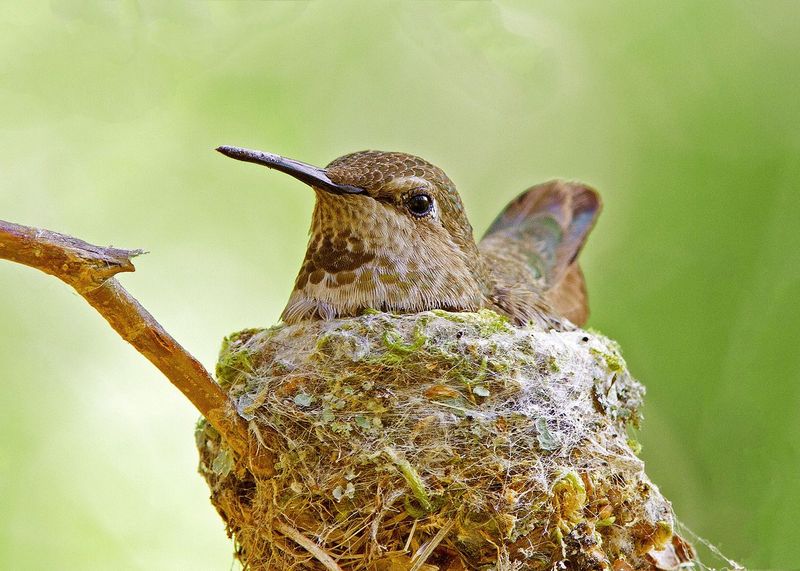
Timing is everything when it comes to spotting hummingbird nests. These birds typically nest during the warmer months, aligning their breeding season with the availability of abundant food sources such as nectar and insects. Understanding this timing can significantly enhance your chances of finding a nest.
In many regions, the nesting season kicks off in early spring and can extend into early summer. This period coincides with the bloom of flowers and the buzzing of insects, providing the necessary sustenance for both the mother and her growing chicks.
Observing the rhythmic patterns of nature, such as the blossoming of particular flowers, can serve as a helpful indicator of nesting activity.
If you’re eager to spot a nest, early morning or late afternoon might be the best times to observe these birds actively gathering materials or feeding.
Patience and timing are crucial, as these moments are brief and fleeting. By aligning your observations with the natural calendar, you stand a better chance of witnessing the intricate life cycle of a hummingbird family.
6. Proximity To Water Sources
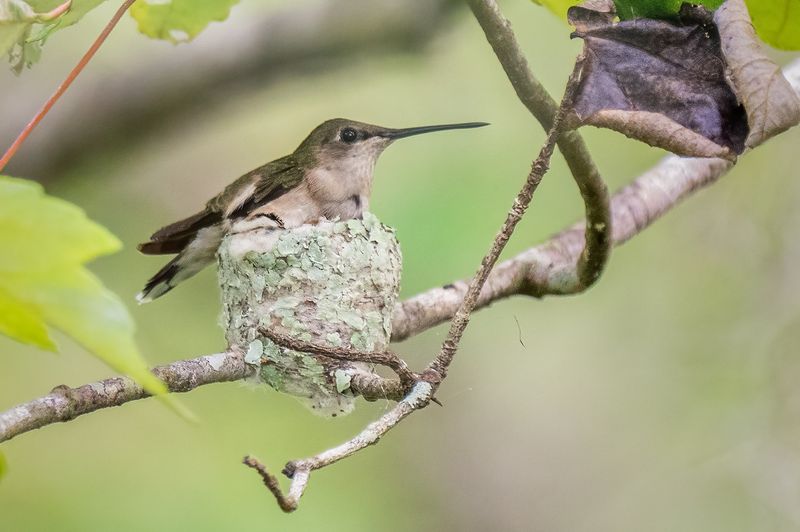
Water sources play a significant role in the nesting choices of hummingbirds. While they don’t build their nests directly over water, they prefer locations that are relatively close. This proximity ensures easy access to both hydration and the abundant plant life that thrives in moist environments.
Being near water also means a higher density of insects, which are crucial for feeding their young. These areas tend to support a variety of flowering plants, offering a steady supply of nectar.
When seeking nests, consider exploring areas near streams, ponds, or even garden fountains. The lush greenery and vibrant blooms in these places create ideal habitats for these energetic birds.
Observing the surroundings of water bodies can reveal subtle signs of nesting activity. Look for a flurry of movement as the birds zip between feeding sites.
The presence of hummingbirds is often a hint that their tiny, well-hidden homes are nearby. By understanding their preference for such environments, you can better predict where these elusive nests might be concealed, and enjoy the serene beauty of nature in the process.
7. Nest Reuse And Adaptation
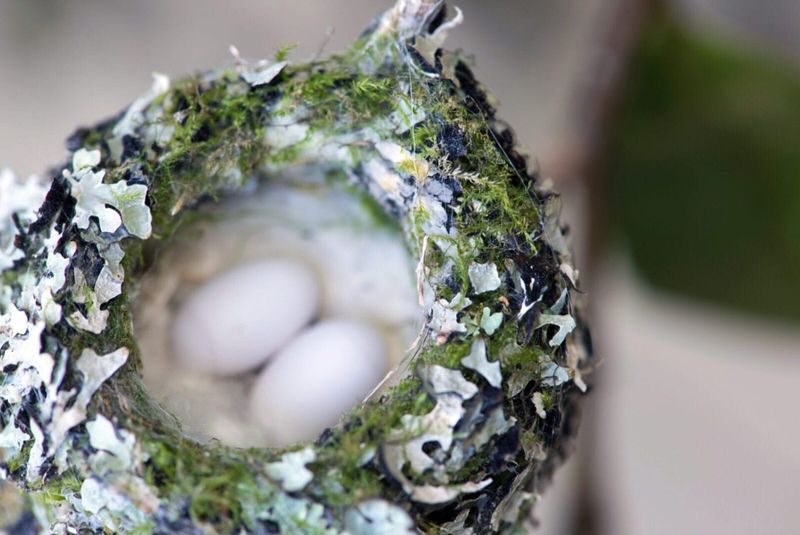
Hummingbirds are not just skilled builders; they are also pragmatic when it comes to nest reuse. In some cases, these resourceful birds return to old nests to refurbish and reinforce them for a new brood. This habit of renewing rather than rebuilding from scratch speaks to their adaptive nature and efficient use of resources.
By adding fresh materials, they can repair or expand an existing nest, ensuring it remains a viable home for new eggs and chicks.
Observing such a behavior offers insights into their nesting strategies and priorities. If you come across a nest that looks slightly worn or uneven, it might be a reused structure, offering a testament to nature’s cycle of renewal.
The sight of a hummingbird diligently working on an old nest can be fascinating. It highlights their persistence and adaptability in a changing environment.
Such observations not only increase your chances of spotting nests but also deepen your appreciation for these birds’ remarkable life patterns. Emphasizing sustainability and resourcefulness, this behavior showcases the intelligence and resilience of hummingbirds in their natural habitats.
8. Hummingbird Behavior
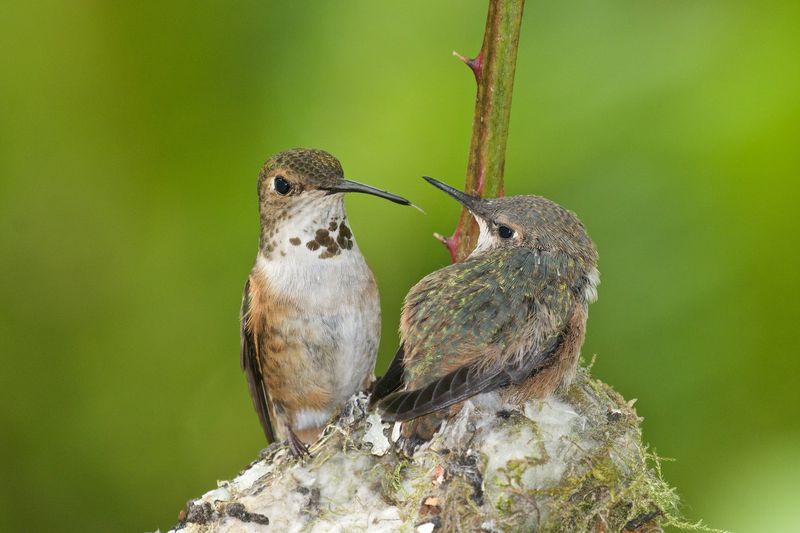
Understanding hummingbird behavior is key to locating their nests. These birds are known for their energetic flight patterns and vibrant courtship displays, which can serve as clues to nearby nesting sites.
During the breeding season, males often perform elaborate aerial maneuvers, while females focus on constructing and maintaining their nests.
Observing these behaviors can provide hints about the location of a nest. For instance, if you notice a female repeatedly visiting a specific area with bits of fluff or plant down, there’s a good chance she’s tending to a nest nearby.
Similarly, the sight of a male performing courtship flights might indicate that a nesting territory is being established.
Spotting these behaviors requires patience and a keen eye. By tuning into the rhythms of their movements and interactions, you can better predict where these secretive nests might be hidden.
Engaging with their world not only aids in discovery but also immerses you in the enchanting lives of these tiny avian wonders.


